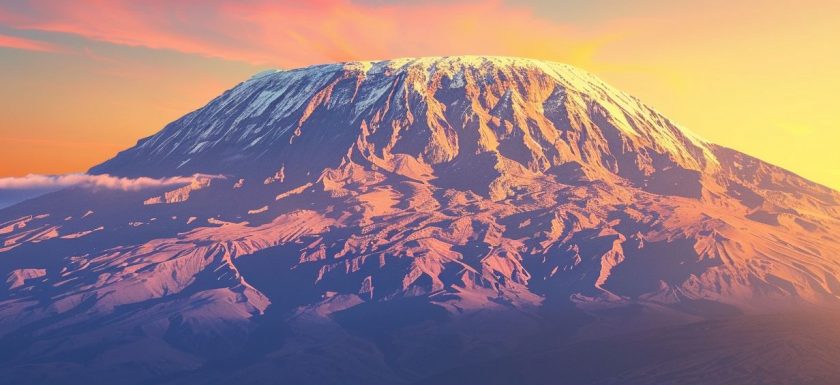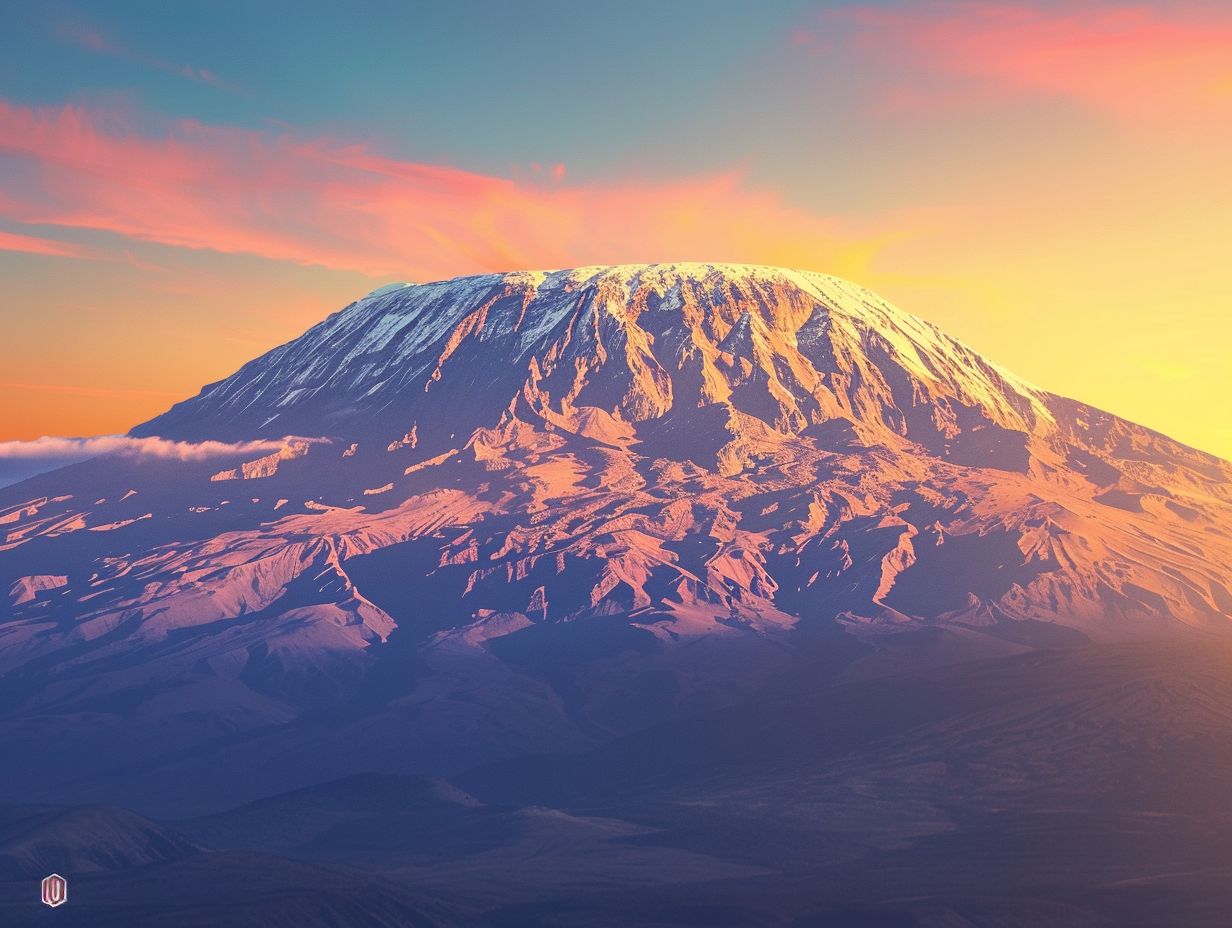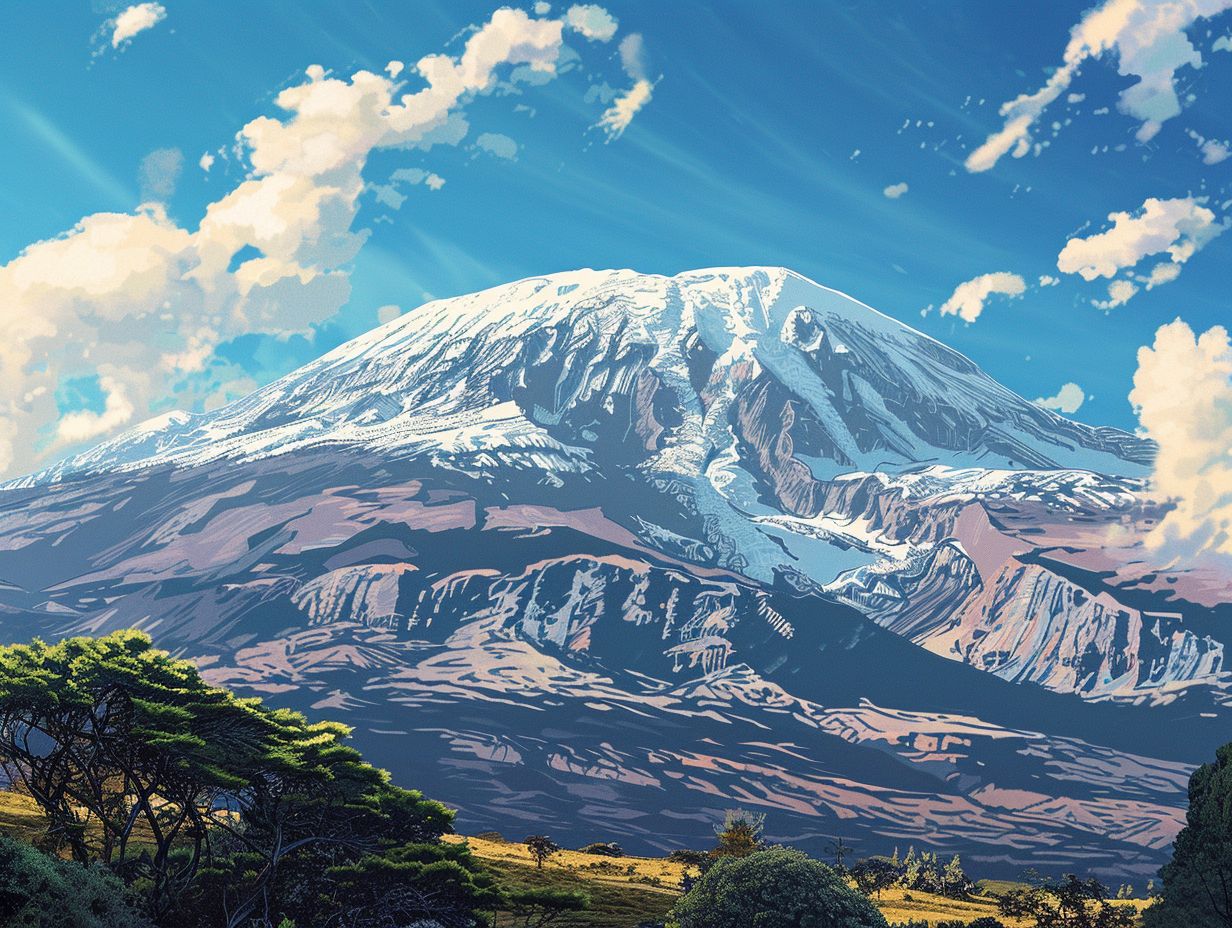
Have you ever wondered about the majestic peak known as Kilimanjaro?
We will explore what Kilimanjaro is, where it is located, and the meaning behind its name.
Delve into the history of Kilimanjaro, including how it was formed and its cultural significance.
Discuss why Kilimanjaro is a popular tourist destination, the different routes to climb it, and the challenges and preparations involved.
Join us as we uncover the conservation efforts for this iconic mountain.
Key Takeaways:

- Kilimanjaro is a renowned mountain located in Tanzania, Africa.
- The name Kilimanjaro has a fascinating origin and holds cultural significance.
- Climbing Kilimanjaro requires physical and mental preparation, but the reward is an unforgettable experience.
What Is Kilimanjaro?
Kilimanjaro, also known as Mount Kilimanjaro, is a majestic mountain located in Tanzania, Africa. It is the highest peak in Africa and one of the most iconic landmarks on the continent.
Located near the border of Tanzania and Kenya, Kilimanjaro is a dormant stratovolcano with three distinct volcanic cones, namely Kibo, Mawenzi, and Shira. Its snow-capped summit, Uhuru Peak, rises to an impressive 5,895 meters (19,341 feet) above sea level, drawing adventurers and climbers from around the globe seeking the ultimate challenge.
The mountain’s roots delve deep into the cultural tapestry of the region, held sacred by the local Chagga people. Kilimanjaro doesn’t just tower over Africa physically, but it stands as a symbol of strength, resilience, and unity for the continent.
Where Is Kilimanjaro Located?
Kilimanjaro is located in Tanzania, which is a country situated in Eastern Africa. Specifically, it is positioned near the border with Kenya, making it a prominent landmark in the region.
Geographically, Kilimanjaro is part of the East African Rift, a tectonic plate boundary formed around 20 million years ago. It is surrounded by diverse ecosystems, including lush rainforests, alpine meadows, and barren landscapes due to its significant height and varying climate zones.
Its proximity to the equator influences its unique glacial formations on the summit, making it one of the few places in the world where ice can be found so close to the equatorial line.
What Is the Meaning of Kilimanjaro?
The name Kilimanjaro has its roots in the Swahili language, with ‘Kilima‘ meaning ‘mountain’ and ‘Njaro‘ being a Chagga word. When combined, it signifies the ‘Mountain of Greatness’ or ‘Mountain of Caravans’ in local dialects.
The presence of the term ‘Kilima’ reflects the mountain’s prominent stature, signifying its grandeur and towering presence amidst the landscape. Meanwhile, ‘Njaro’, representing caravans, hints at the historical significance of Kilimanjaro as a meeting point for diverse cultures and trade routes.
Thus, the name encapsulates not only the physical characteristics of the mountain but also its cultural significance, acting as a beacon of unity and exchange throughout history.
What Is the Origin of the Name Kilimanjaro?
The origin of the name Kilimanjaro can be traced back to the Chagga people, where ‘Njaro’ was a term used by the locals to refer to the mountain. Over time, this term evolved into ‘Kilimanjaro’ as it was adopted by Europeans and explorers.
This evolution of the name ‘Kilimanjaro’ showcases the cultural exchange between different communities and the impact of early European explorers. The incorporation of ‘Kili,’ a Swahili word meaning ‘mountain,’ further enriched the name’s significance, fusing local Chagga tradition with outside influences.
As more European adventurers learned of the majestic peak, the pronunciation and spelling of the mountain’s name became standardized to ‘Kilimanjaro,’ solidifying its identity on maps and in literature.
What Does Kilimanjaro Represent?

Kilimanjaro represents a significant cultural and geographical landmark for the Masai and other tribes in Africa. It symbolizes strength, beauty, and a connection to the land that has been passed down through generations.
The towering presence of Kilimanjaro is not just about its physical grandeur but extends into the realms of spirituality and folklore for the Masai and other tribes. It carries the weight of ancestral wisdom and traditions, serving as a beacon of cultural identity.
The snow-capped peak of Kilimanjaro often embodies the divine presence, uniting the earthly and heavenly domains in the eyes of the tribes. Its enduring presence in the African landscape symbolizes resilience and permanence amidst the ever-changing world.
What Is the History of Kilimanjaro?
The history of Kilimanjaro is rich with interactions between Europeans, explorers, and the Tanzanian people. It has served as a focal point for cultural exchanges and linguistic developments over the centuries.
European encounters with Kilimanjaro can be traced back to the late 19th century when German explorers like Hans Meyer and Ludwig Purtscheller made significant ascents, putting the mountain on the global map. These expeditions sparked interest in the region, leading to further exploration and mapping of the area.
As European presence increased, so did the impact on Tanzanian languages and societal dynamics. The interactions between European settlers and the local Chagga people, who have long lived in the mountain’s foothills, brought about cultural exchanges and shifts in traditional practices.
How Was Kilimanjaro Formed?
Kilimanjaro’s formation dates back to ancient geological processes that shaped its landscape. Early explorers like Krapf and later climbers like Hans Meyer played vital roles in uncovering the mountain’s geological history.
The majestic Kilimanjaro stands as a testament to the intricate geological forces that have been at play for millions of years. From volcanic activity to tectonic shifts, a series of events intricately molded this iconic peak.
Notable figures such as Krapf were among the first to document the wonders of Kilimanjaro, sparking curiosity about its origins. Hans Meyer’s pioneering expedition further delved into the mountain’s mysteries, providing crucial insights into its geological evolution.
What Is the Cultural Significance of Kilimanjaro?
The cultural significance of Kilimanjaro extends beyond its physical presence, deeply influencing the traditions, beliefs, and ceremonies of tribes across Africa. It serves as a spiritual beacon and a symbol of unity among diverse communities.
For the Chagga tribe of Tanzania, Kilimanjaro holds a special place in their cultural fabric, with various rituals and ceremonies dedicated to the mountain. Legends speak of ancestral spirits residing in the peak, guiding the tribe in times of need. Among the Maasai, Kilimanjaro is seen as a sacred site for rainmaking ceremonies, crucial for agricultural prosperity.
The mountain features prominently in the folklore of many tribes, with stories of gods and heroes intertwined with its majestic presence. Kilimanjaro’s snow-capped peak often symbolizes purity and resilience in the face of challenges.
Why Is Kilimanjaro a Popular Tourist Destination?
Kilimanjaro’s popularity as a tourist destination stems from its iconic summit, particularly the peak known as Kibo. Climbers from around the world seek the challenge of ascending this legendary mountain.
The allure of Kilimanjaro’s summit lies not only in its physical grandeur but also in the spiritual and emotional journey it represents for climbers. Scaling Kibo offers a unique sense of accomplishment and awe, standing atop Africa’s highest point.
The adventure of traversing the diverse climates and landscapes, from lush rainforests to Arctic conditions near the summit, provides a truly immersive experience for those brave enough to undertake the expedition.
What Are the Different Routes to Climb Kilimanjaro?

Kilimanjaro offers multiple routes for climbers, each presenting unique challenges and landscapes. From the Marangu Route to the Machame Route, adventurers can choose the path that best suits their skills and preferences.
Among the most popular routes is the Lemosho Route, known for its stunning views and diverse terrain. Climbers on this route often traverse through lush rainforests before reaching the rocky landscapes of the Shira Plateau. Umbwe Route, on the other hand, is one of the most challenging routes, preferred by experienced climbers seeking a more direct ascent.
The breathtaking scenery of the Western Breach offers a demanding yet rewarding climb. The Rongai Route provides a unique perspective as it approaches Kilimanjaro from the north, offering a quieter and less crowded experience.
What Are the Challenges of Climbing Kilimanjaro?
Climbing Kilimanjaro presents numerous challenges, including altitude sickness, unpredictable weather conditions, and physical endurance tests. These factors make it a demanding but rewarding adventure for climbers.
One of the major obstacles climbers face is the effects of high altitude. As individuals ascend the majestic Kilimanjaro, they may experience symptoms of altitude sickness such as headaches, nausea, and shortness of breath due to decreased levels of oxygen in the air. These symptoms can range from mild discomfort to severe sickness and can affect anyone regardless of their fitness level.
Climbers must navigate through ever-changing weather patterns, from scorching heat at lower elevations to freezing temperatures at the summit. Unpredictable weather conditions, including sudden storms and low visibility, can pose significant challenges and increase the risk of frostbite and hypothermia.
To conquer these challenges, climbers need to undergo rigorous physical and mental preparation. Building strength, stamina, and endurance through regular exercise and cardiovascular training are essential. Mental resilience and determination are equally crucial, as climbers must stay focused and motivated during the arduous journey up the mountain.
What Are the Recommended Preparations for Climbing Kilimanjaro?
Proper preparations are essential for climbers attempting the Kilimanjaro summit. This includes acquiring the right gear, undergoing physical training, and acclimatizing to the altitude to ensure a safe and enjoyable journey.
When selecting equipment, be sure to invest in high-quality hiking boots that are comfortable and provide good ankle support. Layers of clothing to handle varying temperatures, a reliable backpack, and essential items like a headlamp and water bottle are crucial.
To build physical strength, engage in a combination of cardio and strength training exercises focusing on legs, core, and cardiovascular endurance. Gradual workouts with increasing intensity can help mimic the demands of climbing.
Altitude acclimatization is key to preventing altitude sickness. It’s recommended to plan a climb with enough days to acclimatize properly and consider taking medication if advised by a healthcare provider.
Remember, preparation is the foundation for a successful Kilimanjaro adventure!
What Are the Conservation Efforts for Kilimanjaro?
Conservation efforts for Kilimanjaro focus on preserving its unique ecosystem, promoting sustainable tourism practices, and protecting the mountain’s natural beauty for future generations.
In recent years, there has been a growing awareness of the fragility of Kilimanjaro’s environment, leading to various initiatives aimed at enhancing its sustainability.
Organizations such as the Kilimanjaro National Park Authority, local conservation groups, and international bodies like UNESCO have collaborated to implement measures that ensure the biodiversity preservation and environmental stewardship of the region.
These efforts include community involvement in eco-friendly practices, waste management programs, and the promotion of responsible trekking routes to minimize the impact on the delicate ecosystem.
Frequently Asked Questions
What Does Kilimanjaro Mean?

Kilimanjaro is the name of a mountain located in Tanzania, Africa. It is also known as “The Roof of Africa” because it is the tallest mountain on the continent.
What is the Literal Meaning of Kilimanjaro?
Kilimanjaro is derived from a native Swahili word “Kilma Njaro” which translates to “shining mountain” or “white mountain”. This refers to the snow-capped peak of the mountain, which can be seen from a distance.
Is Kilimanjaro a Volcano?
Yes, Kilimanjaro is a dormant volcano. It is made up of three volcanic cones: Kibo, Mawenzi, and Shira. However, it is currently inactive and has not erupted in over 100,000 years.
How Tall is Kilimanjaro?
Kilimanjaro stands at an impressive height of 19,341 feet (5,895 meters). It is the tallest free-standing mountain in the world and attracts thousands of hikers and climbers each year.
What is the Significance of Kilimanjaro?
Kilimanjaro is not only a popular tourist destination, but it also holds cultural and spiritual significance to the local Chagga people who live at the base of the mountain. It is considered a sacred place and is often used for religious ceremonies and rituals.
Has Kilimanjaro Always Had Snow?
No, Kilimanjaro’s snow-capped peak was formed relatively recently, around 11,000-15,000 years ago. Due to its close proximity to the equator, the mountain’s climate is changing and the snow is gradually melting. Scientists predict that Kilimanjaro may be completely snow-free in the next 20 years.